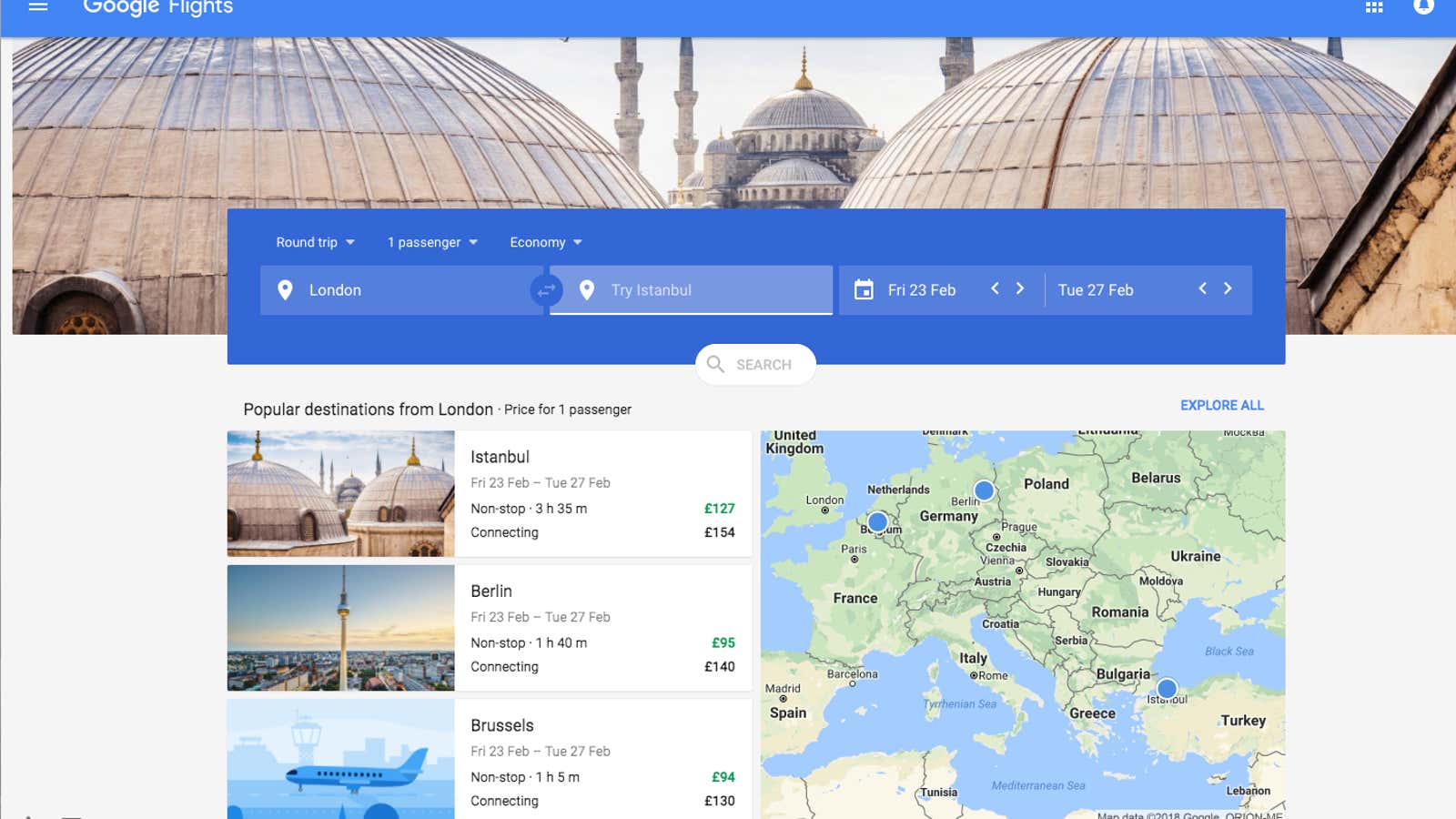When the average consumer thinks of so-called disrupters in the online travel world today, it’s unlikely they think of Google.
However slowly but surely over the past few years, Google has made more and more tweaks to its travel tools, making its long-term aspirations clearer. Google doesn’t just want to be an option for where you can search for flights and hotels, it wants to be part of every stage of the online travel process—from discovery and planning your trip to helping you decide where to go and what to do once you reach your destination.
More proof of this came this week, when Google announced a few user experience changes to its existing mobile travel tools. Travelers searching via Google on their phone will now find a navigation bar at the top of Google’s interface, where they can toggle between flights and hotels for the dates and destination they’ve already selected (which removes the need for cumbersome separate searches). Perhaps more significantly, they’ve also added “Explore” and “My Trips” tabs to the new navigation, the former offering users a way to decide where they want to go, the latter collecting all upcoming and past travel reservations from the user’s Gmail.
So why does this all matter? Mainly, because it helps make it clear that Google’s long-term vision is to shift from an advertising-led business model to a product-led one when it comes to its travel tools. This means instead of collecting revenue from a hotel ad that appears in your results when you type in “hotel in New York,” it wants you to actually book that hotel via its travel tools (for which it collects more money per transaction than its traditional ads).
And indeed, Google Flights is already making headway with this product-led strategy. While metasearch websites like Kayak and Skyscanner—which aggregate and compare prices, and then refer you elsewhere to book—are well established, Google is at the heels of the industry leader Kayak for airline referral volume, according to Skift’s reporting. For now, Google seems keen to stick to this referral model for both flights and hotels, rather than becoming a booking service itself.
And of course, when it comes to inserting themselves at every part of the travel journey, they have a pretty huge leg up. Most people already use Google products every single day, whether it’s Gmail, Google Maps, or Google Drive. Google, it seems, wants to make those services ever more integrated with its travel toolbox. They’ve already done this explicitly with their dedicated Google Trips app, which is getting better at suggesting itineraries and travel activities based on what they know about user preferences.
Google’s new consumer-led vision of its travel products may seem subtle, but make no mistake—it’s ambitious. And it may mean that where you used to use three to five different platforms to research, book, and plan a trip—Expedia, Kayak, TripAdvisor, Airbnb, Booking.com—in the coming years, you might just use Google.
